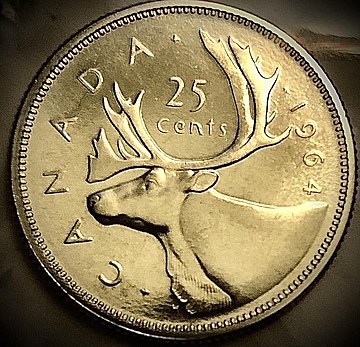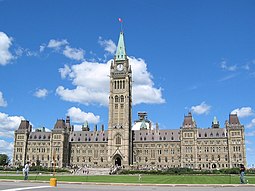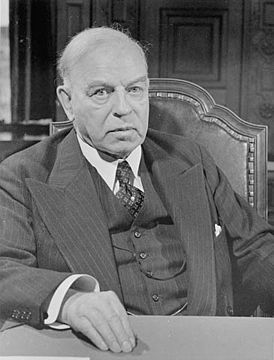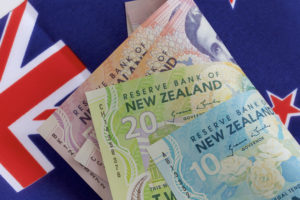Bank of Canada (BoC) - upholding the stability of the Canadian economy
The Bank of Canada (BoC) is Canada's central bank. Its task is to ensure that the correct monetary policy is applied in the northern neighbor of the United States. It is important to distinguish BoC from listed Royal Bank of Canada (RBC)which is the largest bank in Canada. In today's article, we will briefly introduce the history of this central bank and look at its activities. We invite you to read!
Bank of Canada history
The history of the formation of the Bank of Canada and the evolution of the monetary system in Canada is very interesting. Canada started out with a “colonized” money system but z over the years, it slowly gained independence from the metropolis (Great Britain).
Colonized money market
Canada was a British colony that did not follow the path of the United States in changing its relationship with the British crown. Instead, the corset imposed by the British government was slowly loosening. Over time, the policy of the Canadian government became de facto independent from the authorities of the United Kingdom. The Canadian financial market also followed a similar path. The turning point came in 1817, when the bankers of Montreal got permission from the British government to open the first official bank in Canada. It got a name Bank of Montreal (BoM). Under the new law, the BoM was given a monopoly to issue promissory notes modeled on military notes. Thus, the de facto bank became the "central bank" of Upper and Lower Canada.
Constitution Act – a milestone in the cause of Canadian independence
Still, Canada's monetary and financial system was not adapted to the rapidly growing economy. The metropolis saw this problem, and for this reason agreed in 1867 to the adoption The British North America Act. In colloquial speech, the act was named Constitution Act. The act allowed for the creation of a dominion administration. The act also had important consequences for the financial market. From then on, the Dominion (Canada) government could control currency, bills of exchange, bank notes, and the establishment of banks. This was the first step towards a unified monetary market.
Second half of the XNUMXth century: the structure of the banking and monetary system

25 cents. Source: wikipedia.org
Until 1871, there were many local currencies. Under the Uniform Currency Act in 1871, it became the official currency of Canada Canadian dollar. Interestingly, the Canadian banking system has evolved in a completely different direction than the American one. In the XNUMXth century, the US was dominated by small banks with few capital resources, which concentrated their activities in a city or a few counties. In Canada, the banking system has been dominated by a few banks. This made the Canadian system more stable than the American one. On the other hand, the disadvantage was the lack of competition, which made banking services in Canada more expensive than in the United States.
A central bank is established
How did it happen? In 1933, Canadian Prime Minister R. B. Bennett appointed Royal Commission on Banking and Currency. Its task was to recommend a reform of Canada's financial system and to create the concept of a central bank. The committee included many prominent lawyers, economists and financiers. Among them are e.g. Lord Macmillan (lawyer), Sir Charles Addis (director of Bank of England), William Thomas White (former Canadian Minister of Finance), Beaudry Leman (manager of the Banque Canadienne de Montréal). In addition, the commission included the premier of the province of Alberta - John Edward Brownlee.

It was in this building that the Bank of Canada Act (Canadian Parliament) was passed. Source: wikipedia.org
The Bank of Canada was founded in 1934 with the passage of the Bank of Canada Act. Prior to this act, Canada did not have a central bank, thus there was no lender of last resort in the Canadian banking system. As a result, the country's financial system was exposed to system instability during market crashes. From 1891, the role of regulating the banking market was performed by the CBA (Canadian Bankers Association). The government's bank, in turn, was the Bank of Montreal. In turn, the Department of Finance of the Canadian government was responsible for the issue of banknotes. The Act of 1934 was a new quality in the Canadian financial system. Pursuant to the Act, the Bank of Canada was tasked with:
"regulation of credit and currency [for the purpose of] .... to promote the economic and financial well-being of the Dominion".
The initial capital of the bank amounted to 5 million Canadian dollars. Under the 1934 Act, the Bank of Canada was to be a private company. This was to prevent the government from influencing the decisions of the central bank for political reasons. Despite the establishment of the bank, its actual operation began on March 11, 1935. The bank's privacy did not last long.
Nationalization of the bank

William Lyon Mackenzie King. Source: wikipedia.org
As early as 1938, Prime Minister William Lyon Mackenzie King was in favor of transforming the BoC into the so-called "crown corporation". In simple terms, these are enterprises that are controlled by government bodies.
The trend of greater Canadian government interference in economic life began at the turn of the 20th century. In the beginning, he focused on railroads and a monopoly on the sale of alcohol. Since the 80s, more and more state-owned companies have been established. This trend continued until the XNUMXs. Nevertheless, today many important enterprises are state-owned. An example is the Bank of Canada or the Federal Bridge Corporation.
Bank of Canada during World War II
The bank played a very important role during World War II as it had to ensure the stability of Canada's financial and economic system during the war. The Bank of Canada was the issuer of the so-called Victory Bonds. These bonds were intended to help finance Canada's war effort during World War II. After the war, the program continued under the name Canadian Saving Bonds. The funds obtained were to be used to finance part of the Canadian government's public expenditure.
The war period also saw attempts by the government to stimulate economic activity. One example was founding in 1944 of the Development Bank of Canada. This was a side business of Bank of Canada. The Development Bank of Canada's task was to encourage enterprises to invest by providing attractive financing.
The Post-War Years: Keynesianism and Affair
The post-war period saw the rise of Keynesianism. The activity of the central bank was to ensure a large supply of money in order to keep interest rates low, which was supposed to support the policy of full employment. A great example was the loose monetary policy, which was combined with the fiscal expansion of the government of Prime Minister John Diefenbaker. After all, the president of the Bank of Canada - James Elliott Coyne - was concerned about the stability of the Canadian economy in the long term. The flavor of the whole case is added by the fact that the president of the Bank of Canada reported to the minister of finance.
The Coyne Affair

James E. Coyne. Source: wikipedia.org
Government employees pressured James E. Coyne to cut interest rates to boost the Canadian economy. The BoC president feared that inflation would get out of control, and this could have serious consequences for the stability of the economy. The longer the dispute lasted, the more the emotions grew. In 1961, the so-called Coyne Affair broke out. The president of BoC publicly criticized the Canadian government's fiscal policy (so James E. Coyne criticized his superior!). In turn, the government was of the opinion that since it won the election with a significant margin, the “sovereign” gave a mandate to conduct its own monetary policy.
The verbal altercation was really brutal. James E. Coyne was named in Parliament "anarchist" and "communist in sheep's clothing". In turn, the president of the BoC named the prime minister "evil genius". The BoC Board of Directors, under pressure from the Prime Minister, did not renew Coyne's mandate. However, the problem was to raise the salary and pension of the BoC president. This was done by the Bank's Board of Directors. The Prime Minister was very unhappy because he believed that the increase was undeserved. Ultimately, the BoC president resigned from his mandate, but was cleared of charges of illicit enrichment by accepting an increased pension. The scandal resulted in an open division of responsibilities regarding monetary policy. The Coyne Affair was a Pyrrhic victory for the prime minister. John Diefenbaker's party lost 92 seats as a result of the fall in the value of the Canadian dollar and weak economic growth. She had to form a minority government.
Subsequent years: monetarism and crisis
Another important period was the oil shocks and the period of the Volcker shock, which was the policy of high interest rates in the United States. Canada, as a country with economic ties to the US, also felt the economic problems of its neighbor. The period of the XNUMXs and XNUMXs was the triumph of monetarism and liberalism. The BoC's mandate was therefore to keep inflation low.
The period of the 2007-2009 crisis in the United States caused the Bank of Canada to drastically lower interest rates. However, it did not take part in carrying out quantitative easing on the scale seen in the US and the UK. This was due to fears that a sharp increase in the money supply would cause hyperinflation in Canada's "small" economy.
Years after the crisis on the subprime market
For many years after subprime crisis, Canada kept interest rates low. Until mid-2017, rates did not exceed 1%. In 2018, the BoC increased interest rates to 1,75%. It was a series of increases that started in July 2017 and lasted until October 2018.
Due to COVID-19, there was a sharp drop in interest rates to 0,25% and the start of a controversial quantitative easing program. Very quickly, inflation rose to around 5%, which was a value not recorded for 30 years. In October 2021, the Bank of Canada stopped the QE program and rates remained unchanged.
As a result of Russia's aggression against Ukraine, there was a sharp spike in inflation in many regions of the world. It was no different in Canada where inflation in June 2022 reached 8%. The BoC responded by sharply raising interest rates, which rose to 2023% at the end of January 4,5.
Role of the Bank of Canada
The mandate of the BoC was included in the preamble of the famous Bank of Canada Act from 1934. It states that the bank's role is to regulate credit and currency in conjunction with providing non-monetary objectives. These include taking care of the public interest. The aim is also to minimize fluctuations in production levels, trade, prices and employment. Thus, the role of BoC is twofold. On the one hand, it is to keep inflation in check, on the other hand, to ensure stable economic growth in Canada. In addition, the central bank must ensure that the domestic currency is not weakened or strengthened too much.
Since 1991, the role in price stability has been much clearer. At that time, the permissible range of CPI inflation fluctuations was introduced in the range from 1% to 3%. Like other central banks, in order to keep inflation at the assumed level, it manipulates interest rates, the level of required reserves and uses open market operations. These three tools are designed to regulate the activity of the Canadian banking sector.
The Bank of Canada does not require banks to hold fractional reserves. Similar solutions are used in the United Kingdom, New Zealand, Australia, Sweden and Hong Kong. This does not mean that in Canada banks are not required to hold liquid assets. Bank of Canada requires banks to hold in liquid assets (e.g. treasury bonds) funds equal to 30 days of customer withdrawals.
Features Bank of Canada
Bank of Canada, like most central banks in the world, must perform various functions. The bankofcanada.ca website lists the main tasks that BoC has to perform. These are:
- Directing monetary policy – The BoC must ensure that inflation is permanently within the inflation target. At the same time, the central bank must ensure that too restrictive monetary policy does not hamper economic growth.
- Taking care of the stability of the financial system “BoC is the lender of last resort. For this reason, it can provide liquidity to the banking sector or conduct intervention asset purchases.
- Fund management – BoC manages government finances and manages Canada's public debt and foreign exchange reserves.
- Supervision of the payment industry - according to Retail Payment Activities Act, it is the BoC that is responsible for oversight of payment system providers. The task of the central bank is to check whether companies from the payment industry meet legal and risk management requirements.
- Economic analysis – the bank collects and analyzes data. Many of the analyzes are published in Research Newsletter and published in the quarterly Bank of Canada Review.
President of the Bank of Canada
The head of the central bank is the President (i.e. Governor). Pursuant to the Act, the BoC President is appointed for a 7-year term of office, which can then be extended. The President serves as the chairman of the Board of Directors. In theory, it is independent of government policy and cannot be directly removed by the government. But if there is a deep disagreement between the BoC and the government, the Minister of Finance may issue written instructions to the bank regarding the conduct of monetary policy. However, in practice, it is the BoC president who sets monetary policy independently of the government.

Tiff Mackle. Source: wikipedia.org
He is the president of the Bank of Canada Tiff Mackle, who has been holding this position since 2020 for a 7-year term. Tiff Macklem first joined the bank in 1984. After working for other employers, Macklem returned to the Bank of Canada in 1989. At the beginning he worked in the Department of Economic Analysis. In 2000, he became the head of this department. The following years brought further promotions. In 2003, he became an advisor to the head of BoC. In 2004, he became deputy president of the Bank of Canada. Then Tiff moved to the Ministry of Finance.
During the 2008-2009 crisis, Tiff Macklem advised the Minister of Finance of Canada and represented Canada at G7, G20 and FSB (Financial Stability Board) meetings. In 2010, Macklem returned to the Bank of Canada. In 2014, he also started working as a lecturer at the Rotman School of Management. He then worked as a director at the Bank of Nova Scotia.
Government relationship with the Bank of Canada
Bank of Canada is so-called "crown corporation"rather than one of the government agencies. At the beginning, the BoC was a private institution, but it was quickly "nationalized" and the Ministry of Finance has all the shares. However, it retains its independence. According to Bank of Canada Act gave the Canadian Minister of Finance the final decision-making power related to the conduct of monetary policy. Theoretically, the Minister of Finance can decide on monetary policy by means of directives. However, no directive has been issued since the creation of the BoC.
The president and the deputy are appointed by the management board of the bank. It is worth noting that the Deputy Minister of Finance sits on the Board of Directors, but does not have the right to vote. Bank of Canada submits its expenses to the Board of Directors, while departmental expenses are submitted to Parliament. This is to ensure the financial control of the bank. Moreover, the Bank of Canada cannot finance itself from the profits it generates, because they go to the Canadian Treasury.






















![Forex Club – Tax 9 – Settle tax on a foreign broker [Download the Application] Forex Club - Tax 9](https://forexclub.pl/wp-content/uploads/2024/02/Forex-Club-Podatek-9-184x120.jpg?v=1709046278)
![Trading View platform – solutions tailored to the needs of traders [Review] trading view review](https://forexclub.pl/wp-content/uploads/2024/03/trading-view-recenzja-184x120.jpg?v=1709558918)
![How to connect your FP Markets account to the Trading View platform [Guide] fp markets trading view](https://forexclub.pl/wp-content/uploads/2024/02/fp-markets-trading-view-184x120.jpg?v=1708677291)
![How to invest in ChatGPT and AI? Stocks and ETFs [Guide] how to invest in chatgpt and artificial intelligence](https://forexclub.pl/wp-content/uploads/2023/02/jak-inwestowac-w-chatgpt-i-sztuczna-inteligencje-184x120.jpg?v=1676364263)


![WeWork – the anatomy of the collapse of a company valued at $47 billion [WeWork, part II] wework bankruptcy story](https://forexclub.pl/wp-content/uploads/2024/04/wework-bankructwo-historia-184x120.jpg?v=1711729561)
![Adam Neumann – the man who screwed up Softbank [WeWork, part AND] adam neumann wework](https://forexclub.pl/wp-content/uploads/2024/04/adam-neumann-wework-184x120.jpg?v=1711728724)





![How to transfer shares to another brokerage office [Procedure description] how to transfer shares to another brokerage house](https://forexclub.pl/wp-content/uploads/2024/03/jak-przeniesc-akcje-do-innego-biura-maklerskiego-184x120.jpg?v=1709556924)

![The most common mistakes of a beginner trader - Mr Yogi [VIDEO] Scalping - The most common mistakes of a beginner trader - VIDEO](https://forexclub.pl/wp-content/uploads/2024/03/Scalping-Najczestsze-bledy-poczatkujacego-tradera-VIDEO-184x120.jpg?v=1711601376)
![Learning patience: No position is also a position - Mr Yogi [VIDEO] Scalping - Learning patience - No position is also a position - VIDEO](https://forexclub.pl/wp-content/uploads/2024/03/Scalping-Nauka-cierpliwosci-Brak-pozycji-to-tez-pozycja-VIDEO-184x120.jpg?v=1710999249)
![When to exit a position and how to minimize losses - Mr Yogi [VIDEO] Scalping - When to exit a position and how to minimize losses - VIDEO](https://forexclub.pl/wp-content/uploads/2024/03/Scalping-Kiedy-wyjsc-z-pozycji-i-jak-minimalizowac-straty-VIDEO-184x120.jpg?v=1710336731)

















